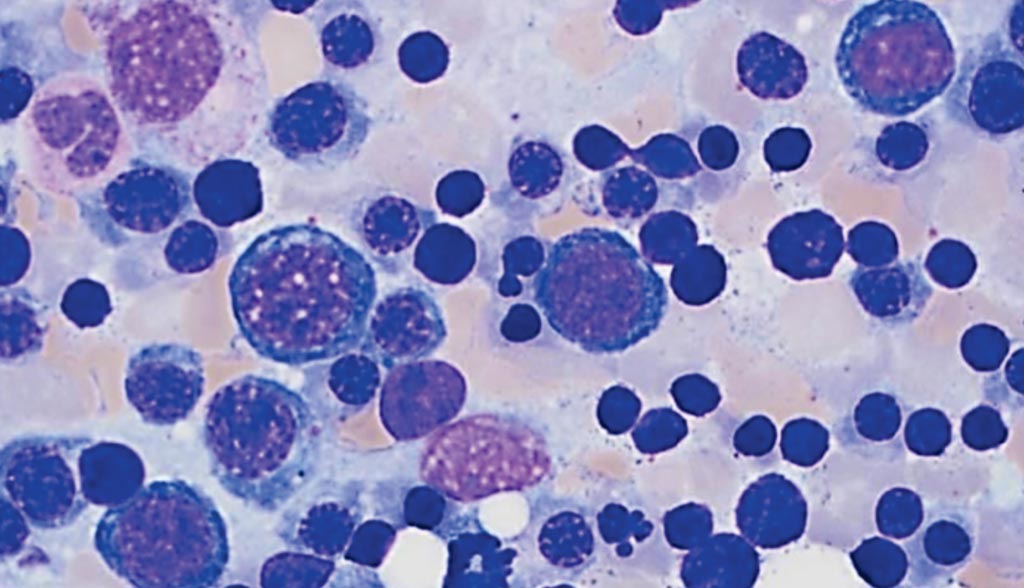Significant Hemolysis Not Required for Thrombosis in PNH
By LabMedica International staff writers
Posted on 19 Mar 2019
Paroxysmal nocturnal hemoglobinuria (PNH), a rare hematological condition, presents with hemolytic or thrombotic symptoms. Cumulative thrombosis incidence in PNH over an eight to ten-year period is 23% to 30%, 20% of patients have multi-site thrombosis and 10% present with thrombosis.Posted on 19 Mar 2019
PNH stem cells arise due to somatic mutations in the phosphatidylinositol glycan A (PIGA) gene in bone marrow stem cells, resulting in loss of the glycosylphosphatidylinositol anchor protein (GPI anchor). Loss of this GPI anchor results in absence of CD55 and CD59, complement regulatory proteins on hematopoietic cells, rendering red blood cells susceptible to complement attack and intravascular hemolysis.

Image: Bone marrow aspirate of a patient with paroxysmal nocturnal hemoglobinuria showing erythroid hyperplasia with occasional nuclear budding consistent with stressed erythropoiesis (Photo courtesy of Katherine Calco).
Hematologists at St James University Hospital (Leeds, UK) and their colleagues retrospectively interrogated the Leeds (UK) PNH database. Patients with PNH granulocyte or monocyte cell proportions over 10% and an LDH level less than twice the upper limit of normal (ULN) for the testing laboratory were identified. Anonymized clinical data were then analyzed to determine risk factors for thrombosis. Comparisons between those with and without thrombosis were assessed.
A total of 429 patients were analyzed and 25 patients who fit the criteria were identified. Median age of the patient cohort was 60 years (range 23 to 80 years). Eleven patients fit the criteria for group 1 (PNH white cells >30%, PNH red cells <10%, LDH <2×ULN), of whom six (54%) had thrombosis. Eleven patients fit the criteria for group 2, (PNH white cells >30%, PNH red cells >10% with higher proportion of type II red cells than type III red cells, LDH <2×ULN) of whom 2 (18.1%) had thrombosis. Three patients fit the criteria for group 3, (PNH white cells 10%-30%, PNH red cells <10%, LDH <2×ULN) with no thrombosis. Median age at thrombosis was 49 years (range 21-67 years).
Patients at higher risk of presenting with thrombosis were those with high PNH white cell proportions and low PNH red cells (group I). Patients with a greater proportion of type II red cells (partial deficiency of GPI linked proteins) compared to type III red cells (complete deficiency of GPI linked proteins) and LDH <2× ULN were also at risk of thrombosis. This is an under-recognized risk for patients with PNH cells.
The authors concluded that that while hemolysis may be associated with a thrombotic event, white cell and platelet factors appear to have a more pivotal role than previously thought in the mechanisms of thrombosis in PNH. The study was published in the March 2019 issue of the journal Haematologia.
Related Links:
St James University Hospital














